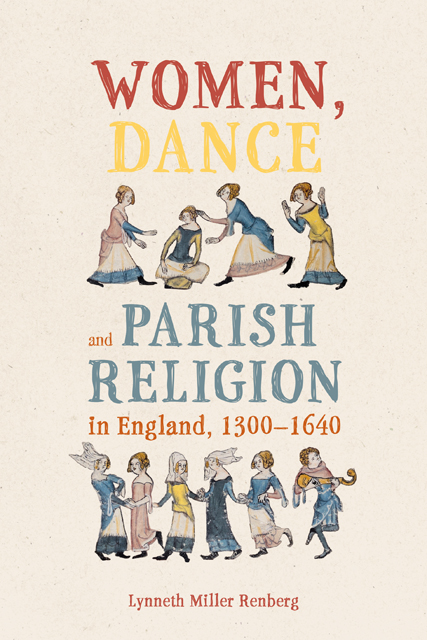Book contents
- Frontmatter
- Dedication
- Contents
- Acknowledgments
- List of Abbreviations
- Introduction
- 1 Reforming and Redefining True Religion
- 2 Dance and Protecting Sacred Space
- 3 Dance and Disrupting Sacred Time
- 4 “Satan Danced in the Person of the Damsel”
- 5 “In Her Dance She Had No Regard Unto God”
- 6 Performing Dance, Sin, and Gender
- Conclusions
- Appendix
- Timeline
- Bibliography
- Index
- Gender in the Middle Ages
2 - Dance and Protecting Sacred Space
Published online by Cambridge University Press: 17 December 2022
- Frontmatter
- Dedication
- Contents
- Acknowledgments
- List of Abbreviations
- Introduction
- 1 Reforming and Redefining True Religion
- 2 Dance and Protecting Sacred Space
- 3 Dance and Disrupting Sacred Time
- 4 “Satan Danced in the Person of the Damsel”
- 5 “In Her Dance She Had No Regard Unto God”
- 6 Performing Dance, Sin, and Gender
- Conclusions
- Appendix
- Timeline
- Bibliography
- Index
- Gender in the Middle Ages
Summary
What did it look like to take rhetorical ideas about true faith and put them into practice in the parish? To demarcate the sacred from the profane, and then protect holy things from the world? Ecclesiastical figures exerted tremendous energy in this marking out of boundaries between sacred and profane in the centuries following Fourth Lateran. Much of this involved identifying true doctrine, teaching right belief, and enforcing proper practice, as discussed in the previous chapter. But, as shown in the tale of the cursed dancing carolers and other medieval sermon tales, authors and parish priests also focused on literal boundaries between the sacred and the profane, enforced in an earthly context through the regulation of matter and bodies. Caroline Walker Bynum’s work has shown that late medieval audiences were increasingly concerned with materiality. Although, as Bynum puts it, “the later Middle Ages has been characterized in recent scholarship as moving toward inner piety and visuality … matter was a more insistent and problematic locus of the sacred in the twelfth to sixteenth centuries than in the early medieval period.” The problematic nature of matter meant that discussions of sacred matter, whether that be relics, spaces, or bodies, were nuanced and fraught. Sacred matter had to be carefully defined, separated from dangerous matter, and protected.
As medieval materials and spaces became more clearly demarcated into sacred and profane, safe and dangerous, so did medieval time. The creation of sacred time was inextricably intertwined with the goal of sacralization of the world and thus with the reforms of Fourth Lateran. As Jacques Le Goff put it, to medieval authors, “Christianity has the means to structure and sacralize the time of human life in such a way as will lead humanity to salvation.” Thus, the tools of reform, including medieval sermons, were rooted in time. Jacobus de Voragine’s saints in the Legenda Aurea were anchored in the time of the liturgy. Exempla in sermon collections like Handlyng Synne were explicitly anchored in time and location. When marking out the parameters of Christianity in the reforms of the late Middle Ages, time and place mattered just as much as body and materials. For Jacobus de Voragine and the other reformers of the thirteenth century, time could be properly sanctified only through a synchronous sanctification of space.
- Type
- Chapter
- Information
- Women, Dance and Parish Religion in England, 1300-1640Negotiating the Steps of Faith, pp. 51 - 76Publisher: Boydell & BrewerPrint publication year: 2022

